November 26, 2021 (Black Friday)
By Erin Heffron, library collections specialist
Step away from the aisle of holiday cookie-scented candles, close your browser tab of family portrait throw blankets, and turn off that QVC segment on grilling utensils. For more exciting and unconventional shopping inspiration, The Wolfsonian Library has you covered!
Before you indulge in our own Design Store's holiday shopping deals and find something to delight everyone on your shopping list, take a look back at products of the past advertised in our vintage magazine collections. Some of these gifts might shock you—literally.
For the Artist
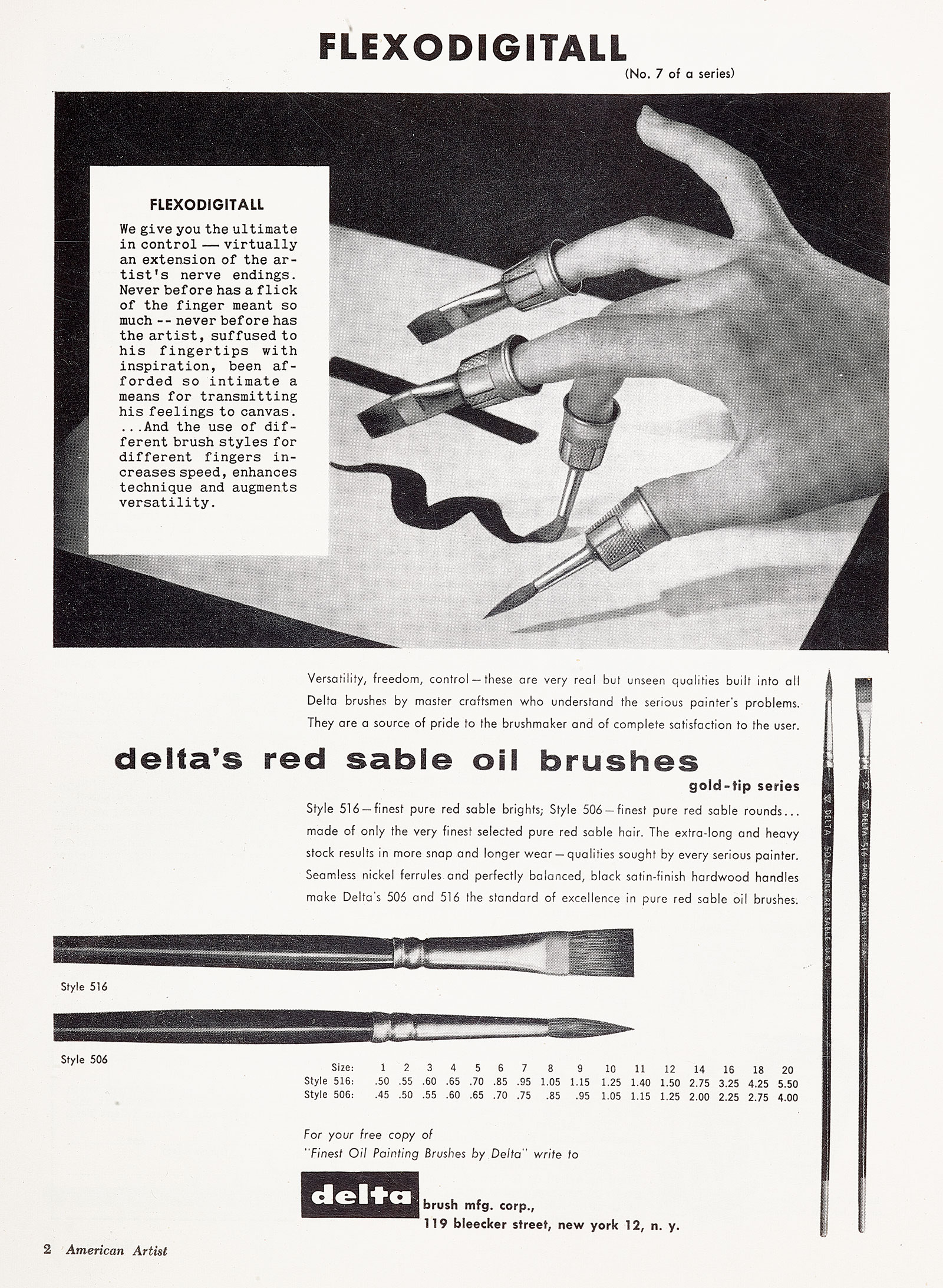
Brought to you by Delta Brush Manufacturing Corporation, Flexodigitall turns your fingertips into paintbrushes! For the artist looking for a more intimate relationship between themselves and the canvas, holding a regular paintbrush just won't do the trick. This ad affirms, "Never before has a flick of the finger meant so much." The man behind this innovation was Edward Brushhands—I mean, Joachim Schultz. Born in Poland and living in Germany when Hitler came to power, Schultz fled to the U.S. with his family in 1938, joining the Jewish community in Brooklyn. He founded Delta in 1941, which became a leading art brush manufacturer, exhibited his artwork in several shows in New York, and passed on his love of art to his daughter, award-winning artist Barbara Shilo.
For the Brain Worker
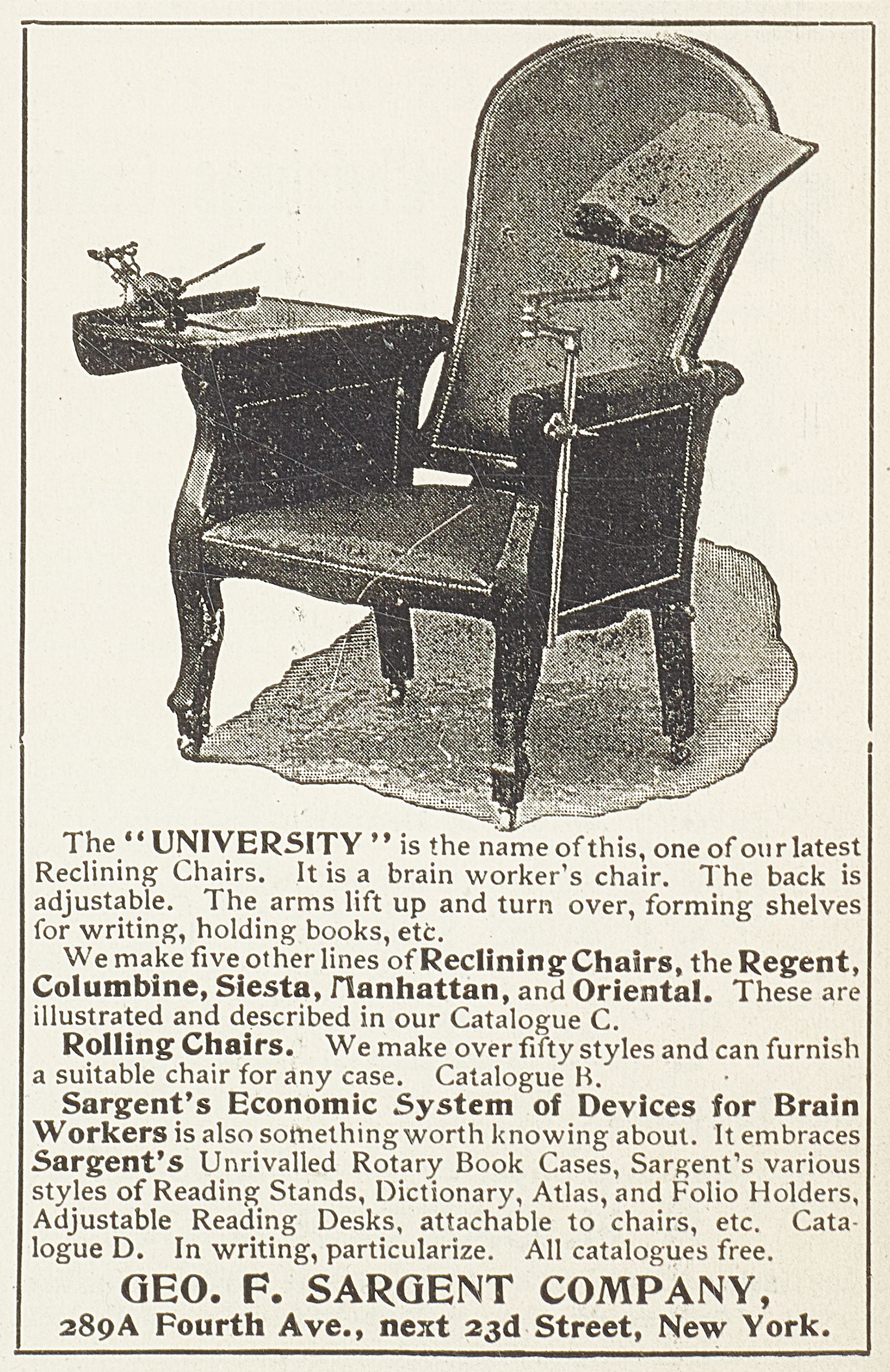
This extravagant chair was part of "Sargent's Economic System of Devices for Brain Workers," a collection of revolving bookcases, adjustable desks and chairs, book holders, and more. Each piece invented by Geo. F. Sargent was designed to work in connection with the others to create the ultimate book reading experience. Sargent's company wasn't only making home library dreams come true; it was also a prominent manufacturer of furniture and accessories for people with disabilities. With the firm established in New York City in the 1870s, Sargent joined the growing number of entrepreneurs looking to meet the needs of an estimated 80,000 wounded and disabled Civil War veterans. Everything from reclining wheelchairs and adjustable beds to commode chairs and crutches could be ordered from Sargent's catalogs, which promoted comfort, mobility, and style for all—not just book nerds.
For the Beauty Queen
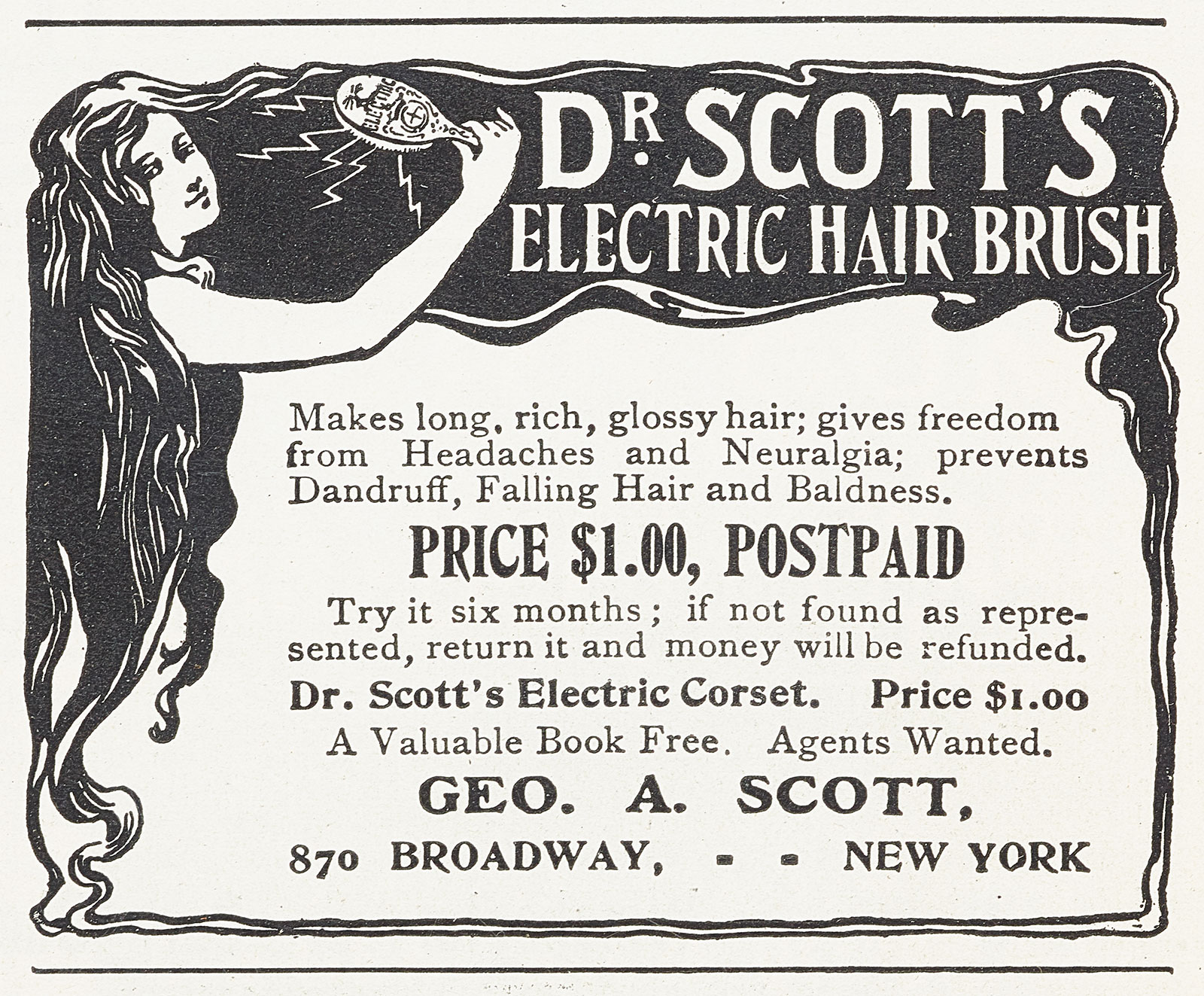
The discovery of controllable electricity in the 19th century ignited an entire industry of products claiming to heal nearly every ailment imaginable with shocks and sparks of electricity. Dr. Scott's Electric Hairbrush came with promises of curing hair loss, dandruff, and headaches. This brush wasn't truly electric though—it was magnetic. Dr. Scott's company marketed a range of items capitalizing on the Victorian buzzword, including toothbrushes, body brushes, and the corsets mentioned in this ad. All of them contained magnets embedded inside, and Scott even sold an accessory compass to prove the magnetism and hair-growing potential.
For the Parent
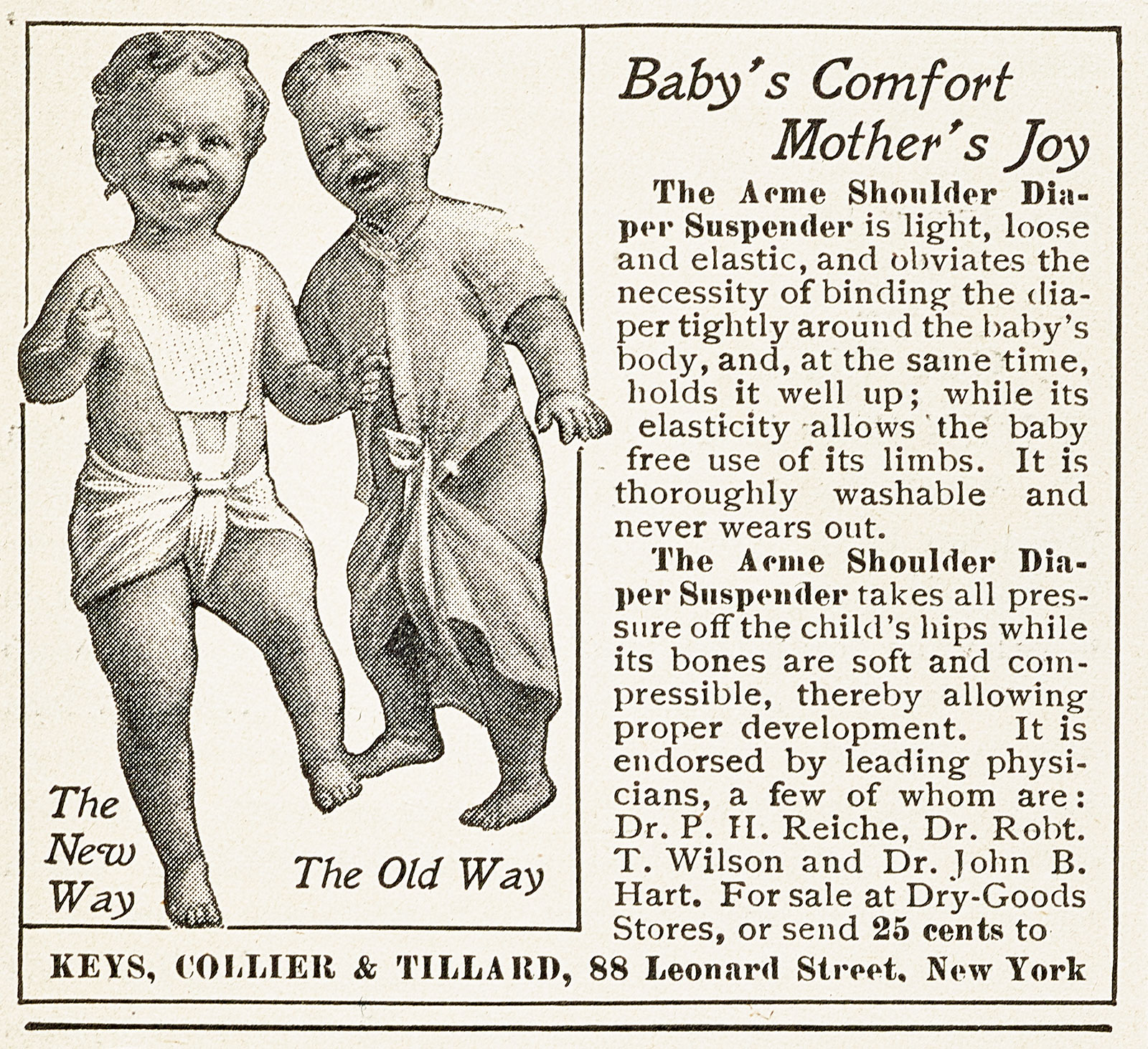
Before the invention of disposable diapers in the 1940s, babies wore cloth diapers made of rectangular fabric tied or held in place with safety pins. Due to concerns about tightly bound diapers constricting movement, affecting development, and causing rashes, the diaper cloth was wrapped rather loosely. Imagine the stress—and mess—of trying to keep loose-fitting diapers on a busy toddler. Thankfully, the New York textile company Keys, Collier & Tillard stepped in to save the day with their Acme Shoulder Diaper Suspender. Say goodbye to sagging diapers, and hello to likely uncomfortable and possibly unsafe body harnesses!
For the Photographer
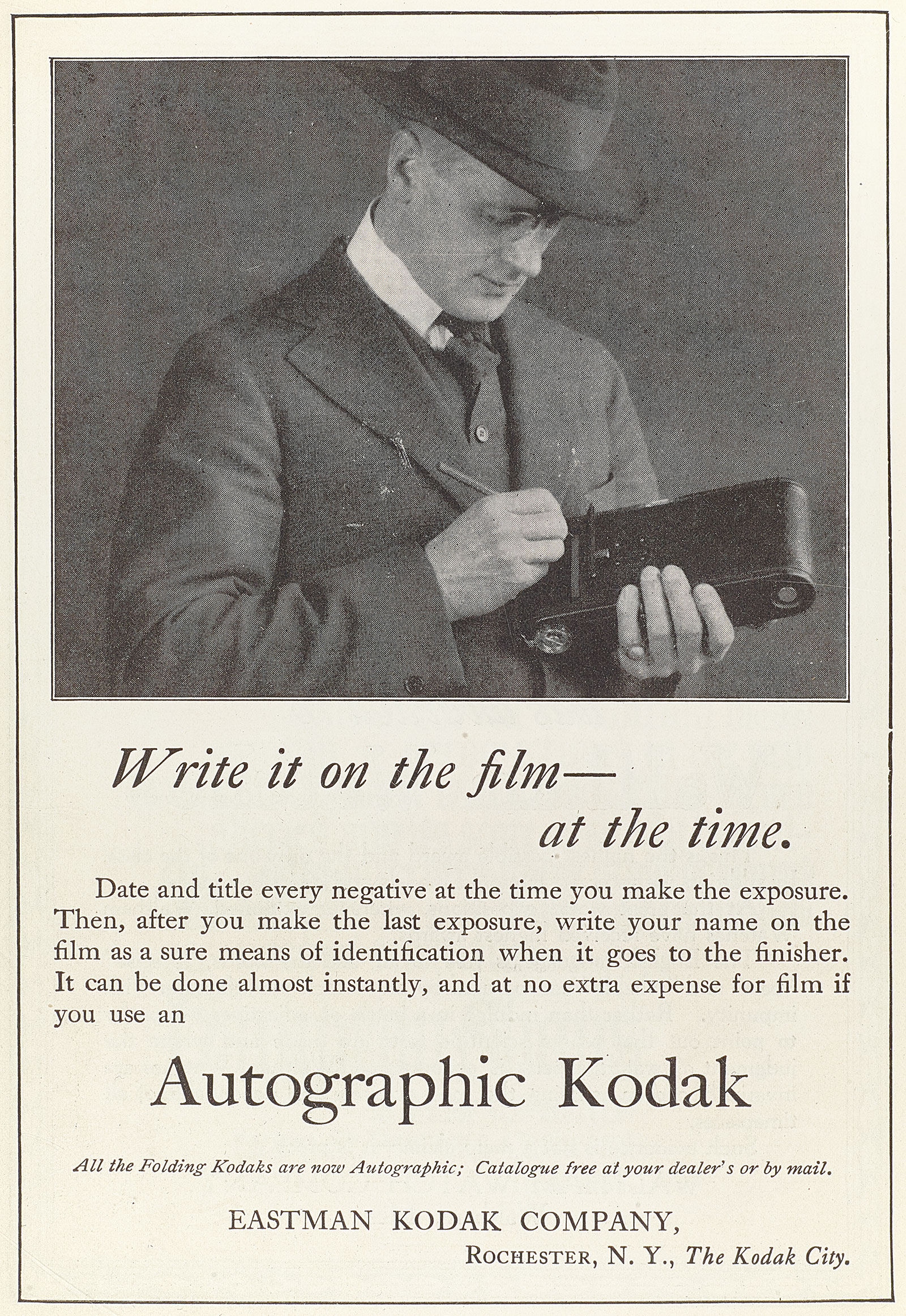
Long before digital cameras automatically recorded metadata for every picture taken, Kodak introduced a line of film cameras that let photographers handwrite title and date notations on negatives as they were shot. The Autographic system first hit the photography scene in 1914 with ads that declared, "The picture, the date, the title—you get them all—with an Autographic Kodak." These cameras featured a tiny window on the back with an equally tiny stylus attached. Users could simply unclip the stylus, open the window, write whatever words their hearts desired onto a carbon-paper backing, leave the door open a few seconds to expose the film, and voila! Metadata. Unfortunately, keeping meticulous notes on every image never quite caught on, and the whole system was discontinued after two decades.
For Those Afraid of the Dark
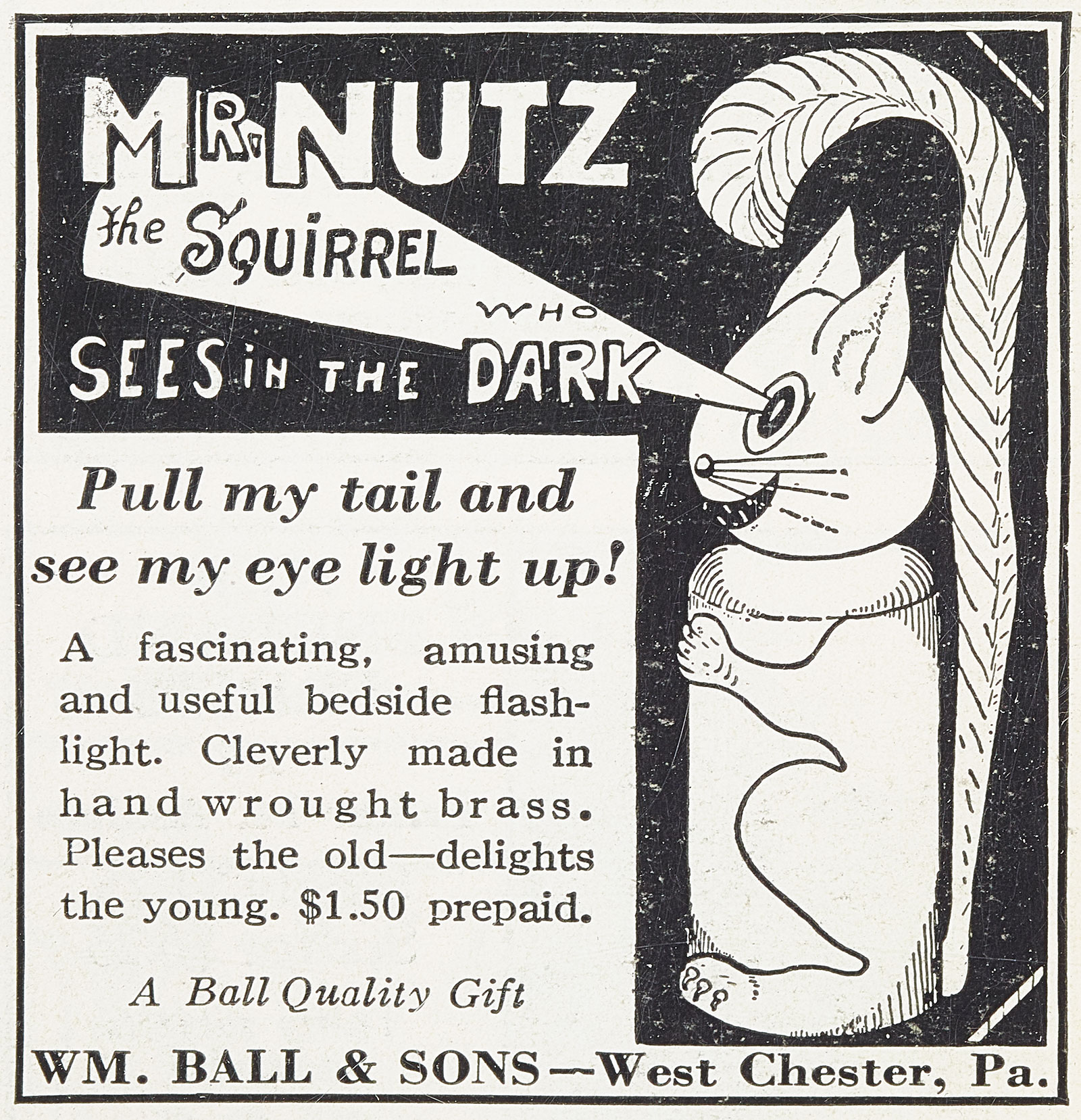
Trade a fear of darkness for a phobia of squirrels after trying to sleep alongside this brass squirrel with a single glowing eye and Joker smile. Still in business as Ball and Ball today, the Ball family traces its metal-working heritage back to 18th-century England. Past and present catalogs from the company consist of serious and painstakingly made furniture hardware and lighting fixtures, specializing in historic reproductions. Not a creepy squirrel in sight
For the Health Seeker
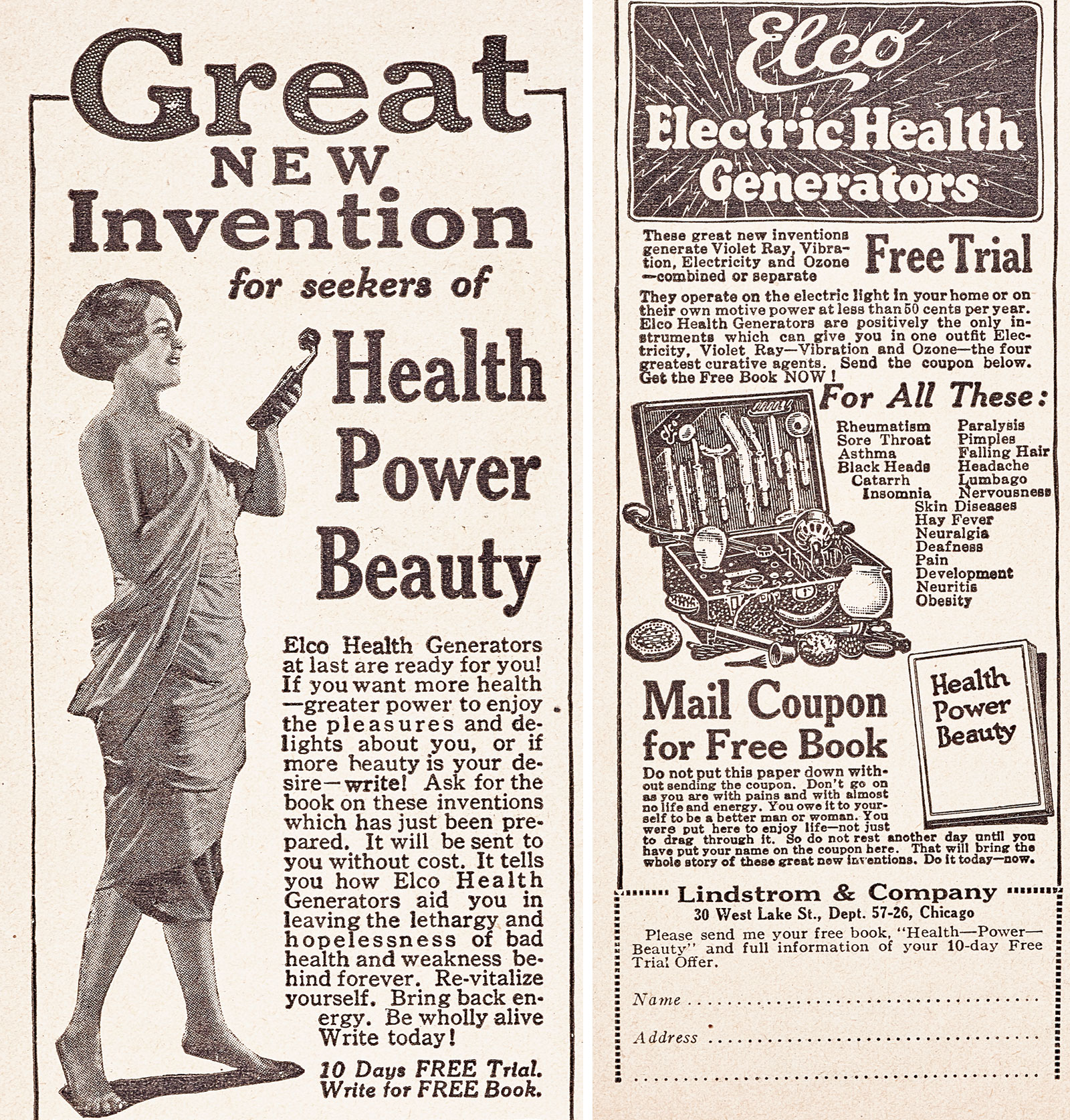
Makers of electro-therapeutic instruments since 1893, Lindstrom & Company produced this Elco Electric Health Generator as an at-home remedy to bring health, power, beauty, happiness, and prosperity to the whole family. The Elco machine combined "the four great curative powers," Violet Ray, Electricity, Ozone, and Vibration, to cure nearly every ailment a Roaring Twenties customer might have. Conditions claimed to be cured by the Elco included: acne, asthma, backache, constipation, female troubles, freckles, deafness, epilepsy, ringworm, dandruff, obesity, heart trouble, weak eyes, writer's cramp, and many more. The electric-powered device was contained in a wooden box and could include dozens of glass and metal attachments in a wide variety of shapes for both external and internal treatments. "Internal?" you ask. Oh, let's leave that up to the imagination.
For the Chain Smoker
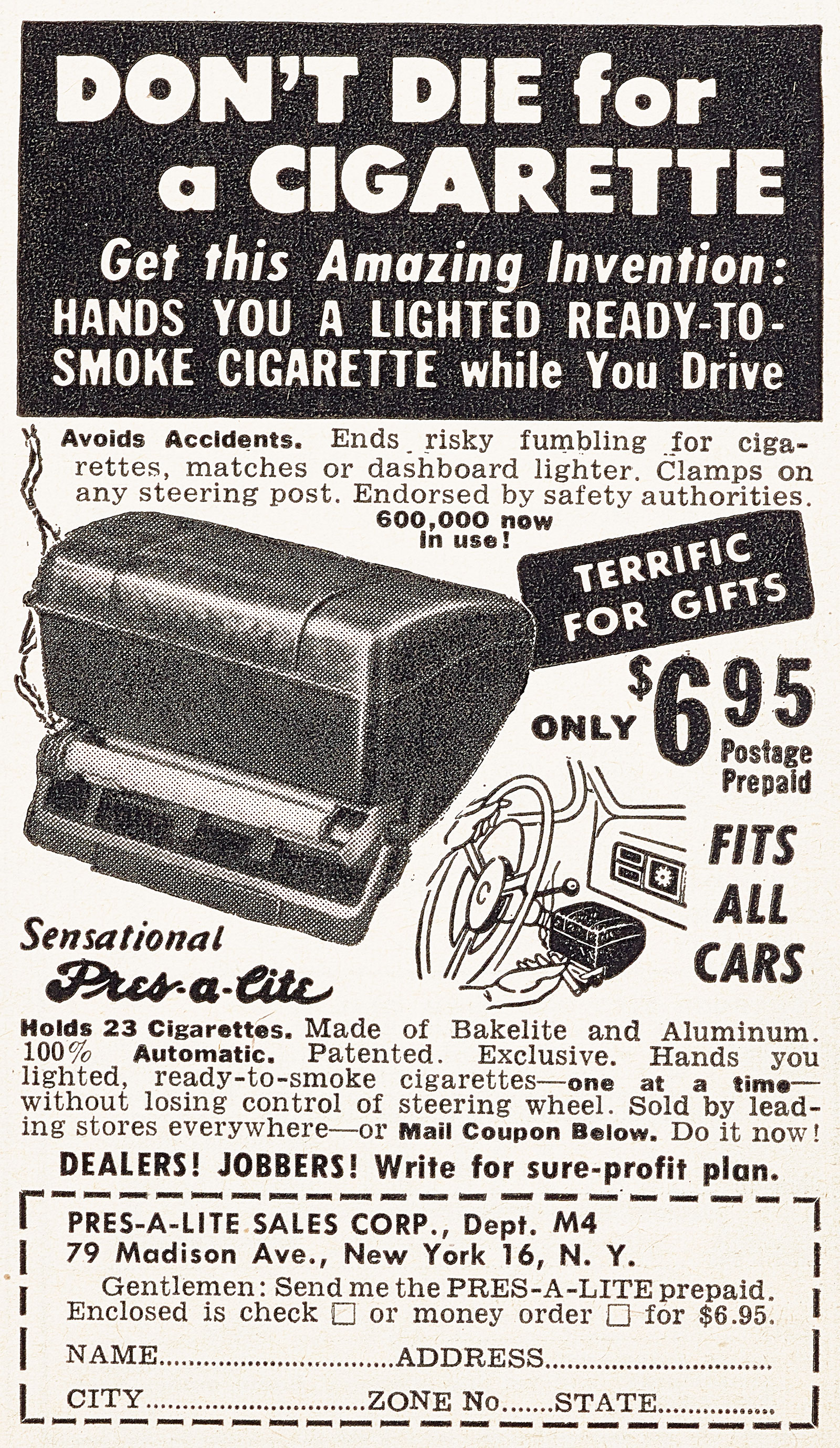
It's easy to forget these days that for much of the 20th century, smoking was widespread and popular in the U.S., reaching a peak rate of 45% of the population in 1954. Inside grocery stores, airplanes, hospitals, movie theaters—you name it, cigarettes were everywhere. Because lighting cigarette after cigarette became too much of a chore, dispensers that lit cigarettes for you appeared in vending machines, on tabletops, in pocketbooks, and inside cars. This Pres-a-Lite dispenser attached to the steering column and offered a ready-to-smoke cigarette without making the driver let go of the wheel or look away from the road. Personally, I'd trade the cigarettes for a dashboard cafecito dispenser.
